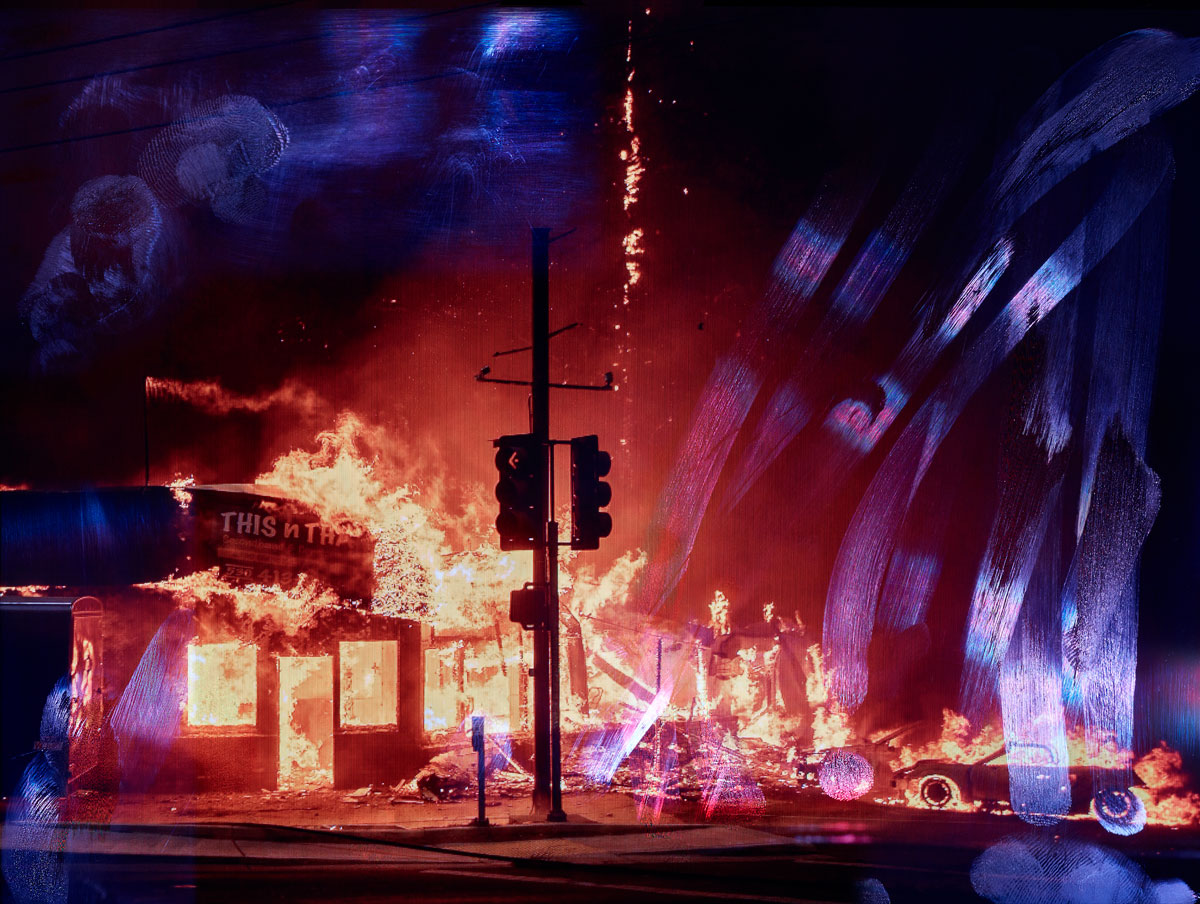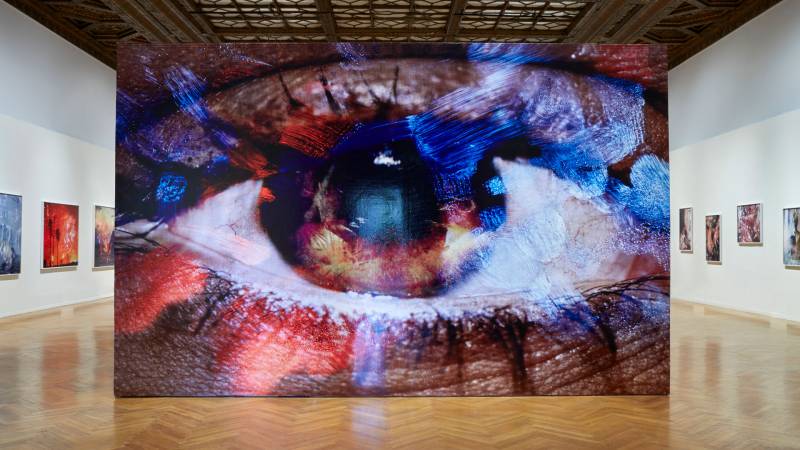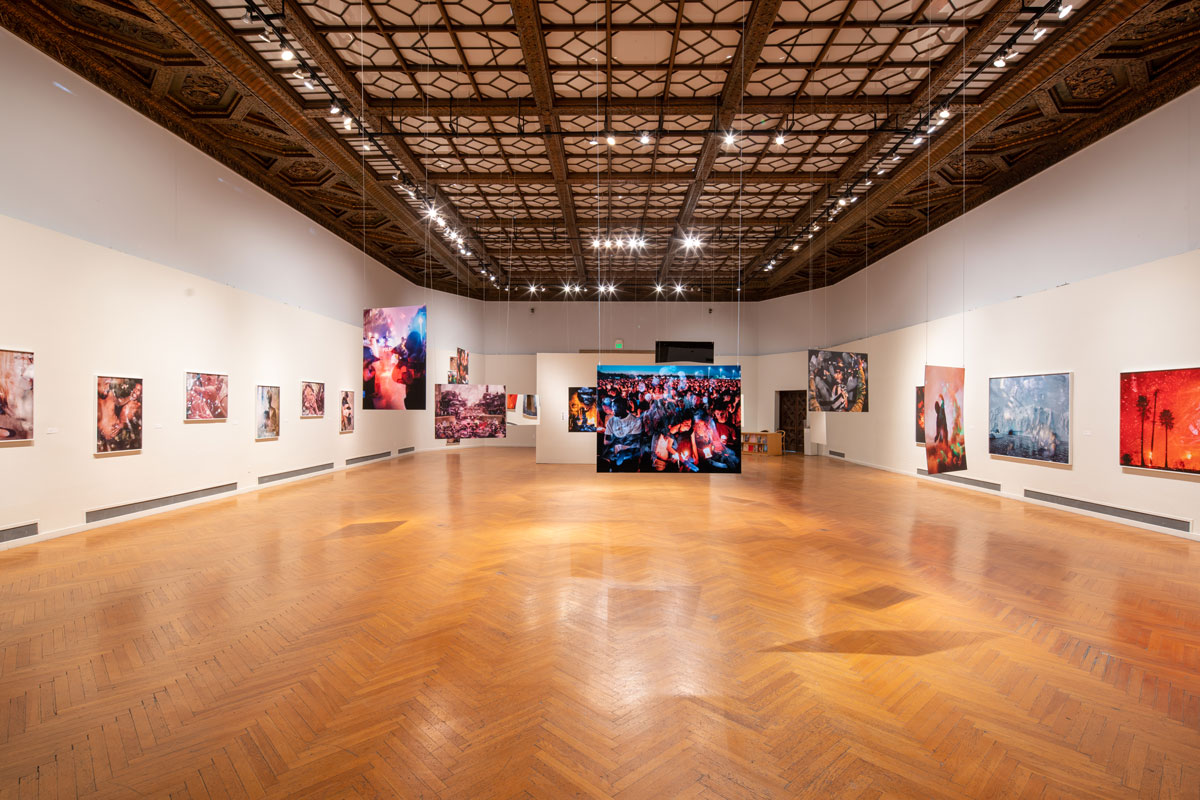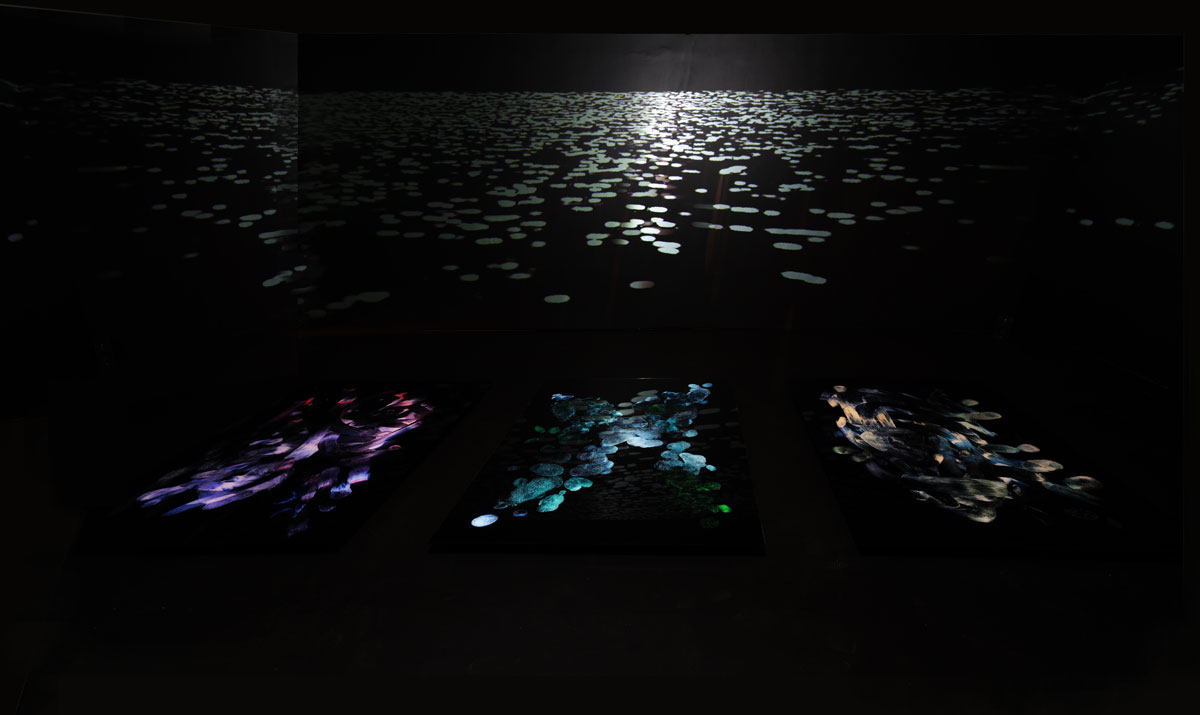What do we see when we look at an image: its content, its colors, its composition? How much of that do we skip over and ignore? In most cases, we’re looking through something to get at our main objective; a bit of Plexiglas sits in front of an artwork, hoping to become invisible. A transparent film coats a phone’s screen, hoping to protect its surface from sudden shocks.
I’m constantly looking through the dust and smudges on my glasses to see the world around me, completely forgetting my view is edged by rims. Inevitably, the detritus becomes too distracting. The surface catches the light and supplants the image, reminding me of the corrective lenses enabling my sight.
At the Mills College Art Museum, Bay Area artist Tabitha Soren’s solo exhibition Surface Tension draws from the multiple meanings implied in her title. The show is made up of photographs of Soren’s iPad, all shot on film, which capture both the surface of the tablet after varying periods of use and the images displayed on its screen. No sleek Cupertino-designed edges betray this setup, but our well-trained eyes immediately recognize a mash of digital and physical. Within the layers of those two things are all manner of additional subjects: fingerprints, smeary swipes, glitchy effects caused by light and oily residue, the orderly grid of pixels.

Soren’s “surface” is the iPad, but also the depth of engagement we often have with what we see on those screens. Some of the tension comes from the drama in the images she appropriates: tender moments, man-made natural disasters, scenes of protest, a world in ceaseless flux. There is also tension in the relationship Soren creates between the randomized and flat interaction of a person’s fingers and the real world events happening beyond their reach.
The pawed-over smears of Katie’s Vacation Phone Photo, an icy landscape seen from water, encapsulate the futility of trying to grasp something so monumental as warming seas and shrinking ice caps.





